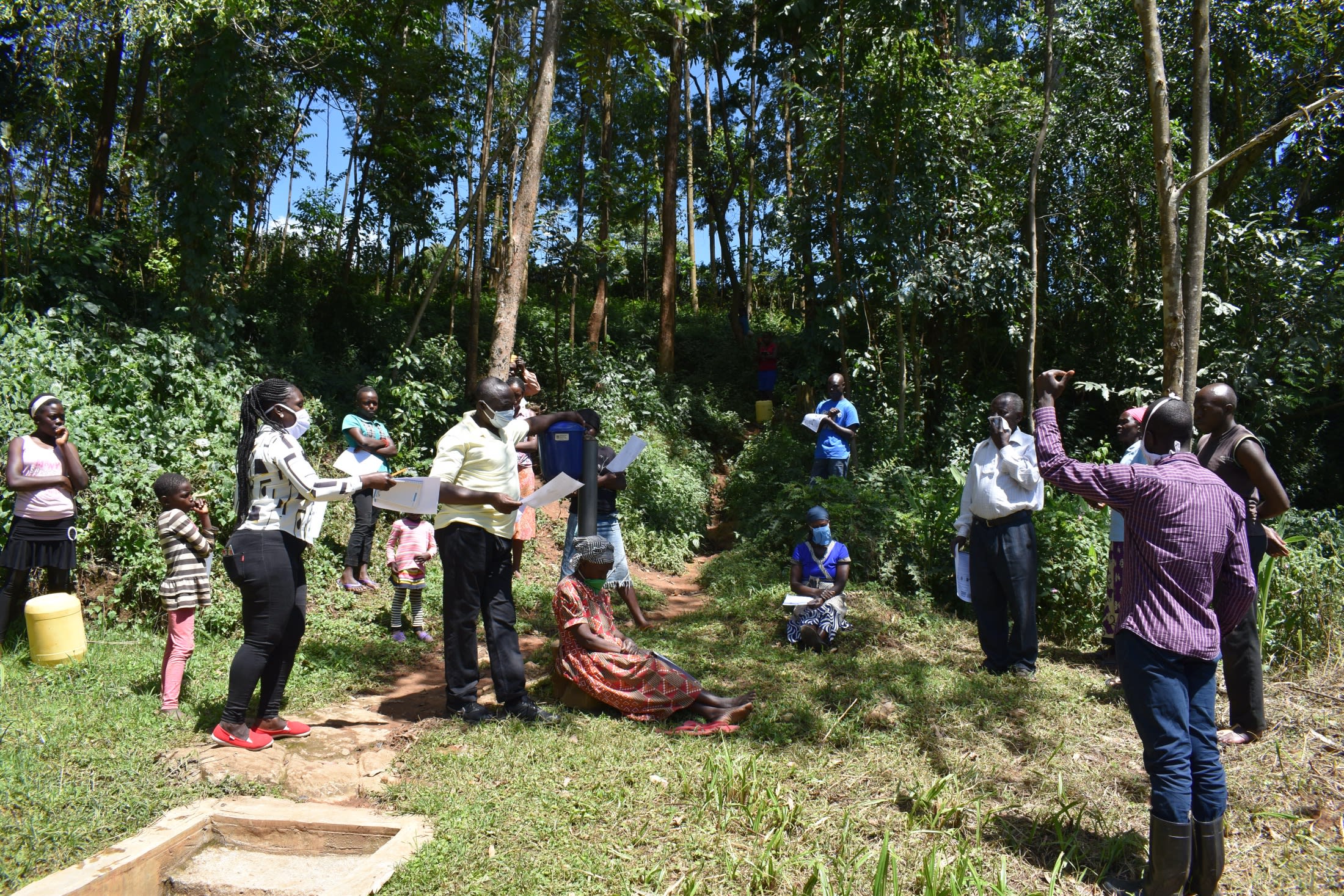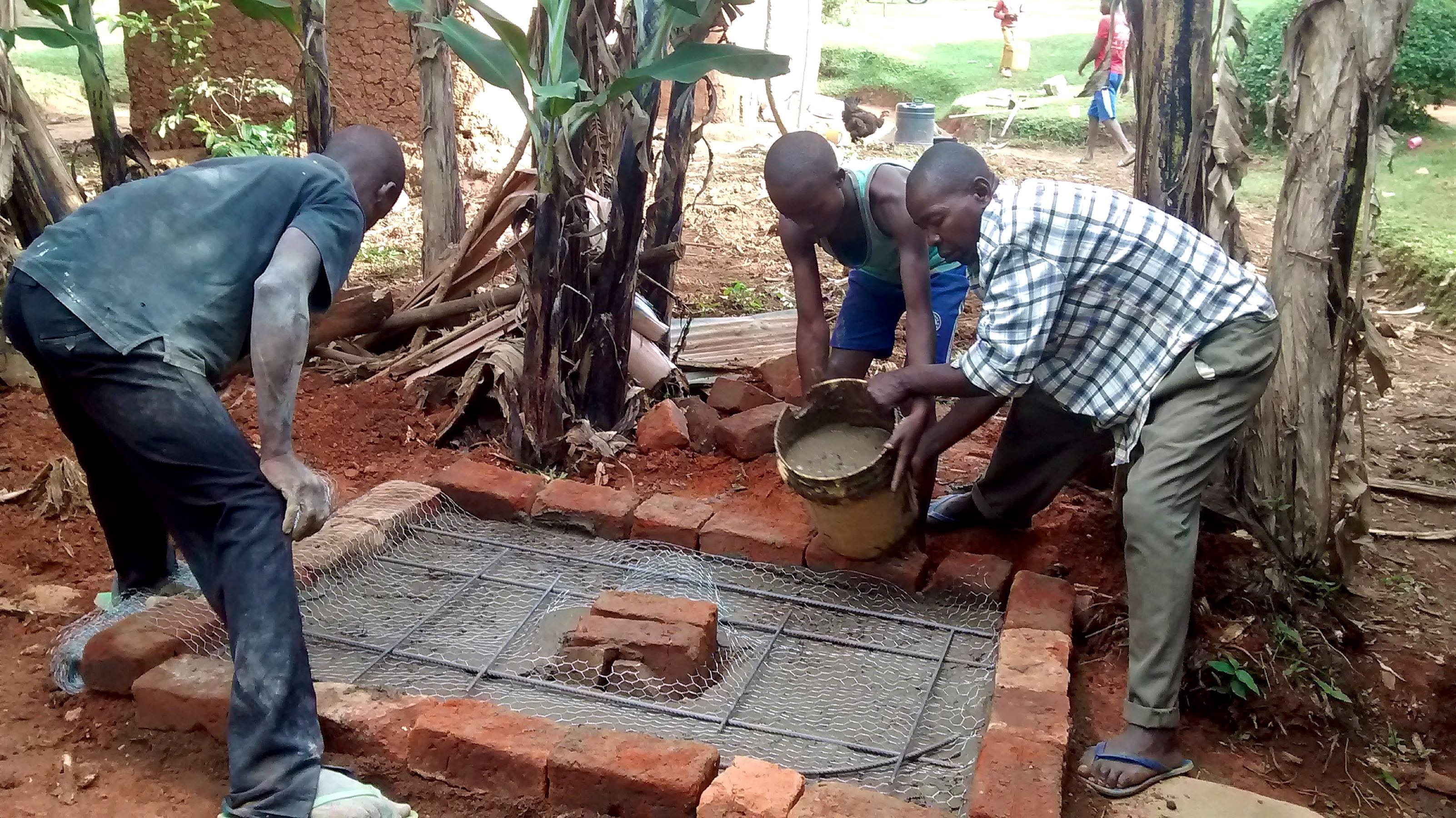Lwenya is located in Vihiga County, Kenya and is home to about 350 people.
In the morning hours, you'll see women rushing around to do chores like milking cows, selling milk, fetching water, cleaning, and digging in their kitchen gardens. They'll heat up rice or maize if there's any left so that children can have a quick breakfast before they walk to school. After children are on their way, adults earn money by either working on their farms or running small businesses (like repair shops). Brewing alcohol is also a popular endeavor. Women normally return home a little before lunch to prepare food for their husbands and children, who return for an hour from their jobs and school.
Water
Everyone relies on water fetched from Warosi Spring, which is an open and unprotected source of water. It is contaminated from all forms of pollutants; people slide into the water as they fetch it, dirt is washed in when it rains, and animals drink from this same water. People even admit that the water is dirty, but they have no other option for their drinking, cooking, and cleaning needs. They say that after consuming this dirty water, they experience serious diarrhea.
Sanitation
Less than half of households have a pit latrine. These are simple latrines made of logs, iron sheet roofs, and plastic bags for doors. Since most floors are made of wood, they're susceptible to rotting away and endangering the user. This low latrine coverage is indicative of an expansive open defecation issue; so many families are opting for the privacy of bushes to relieve themselves.
This same low number of families have helpful tools like dish racks and clotheslines to keep their belongings off the ground. Even if they're cleaning these items, they're contaminated from being left out to dry on bushes or the ground.
It's obvious that mosquito nets have been distributed around Lwenya, but community members are not using them properly. Instead of hanging them over their beds, they're using them as fencing outside. We also observed that some families are throwing their litter all around their household compounds.
Agatha Vike is a mother who relies on selling the milk she gets from her cows. She told us, "Poor health has caused us many health challenges, and therefore we welcome you in this village and request for your help as we are all aware that anybody that comes here with the aim of doing any project is someone that is concerned about us. By protecting our spring and bringing us health education, you will have solved so many problems of this area."
What we can do:
Training
Community members will attend hygiene and sanitation training for at least two days. This training will ensure participants are no longer ignorant about healthy practices and their importance. The facilitator plans to use PHAST (Participatory Hygiene and Sanitation Transformation), CLTS (Community-Led Total Sanitation), ABCD (Asset-Based Community Development), group discussions, handouts, and demonstrations at the spring. One of the most important topics we plan to cover is open defecation and its dangers, as well as having and using a pit latrine.
Training will also result in the formation of a committee that will oversee operations and maintenance at the spring. They will enforce proper behavior around the spring and delegate tasks that will help preserve the site, such as building a fence and digging proper drainage. The fence will keep out destructive animals, and the drainage will keep the area’s mosquito population at a minimum.
Sanitation Platforms
On the final day of training, participants will select five families that should benefit from new latrine floors.
Training will also inform the community and selected families on what they need to contribute to make this project a success. They must mobilize locally available materials, such as bricks, clean sand, hardcore, and ballast. The five families chosen for sanitation platforms must prepare by sinking a pit for the sanitation platforms to be placed over. All community members must work together to make sure that accommodations and food are always provided for the work teams.
Spring Protection
Protecting the spring will ensure that the water is safe, adequate and secure. Construction will keep surface runoff and other contaminants out of the water.
Fetching water is predominantly a female role, done by both women and young girls. Protecting the spring and offering training and support will, therefore, help empower the female members of the community by giving them more time and efforts to engage and invest in income-generating activities.
This project is a part of our shared program with Western Water And Sanitation Forum (WEWASAFO). Our team is pleased to provide the reports for this project (edited for readability) thanks to the hard work of our friends in Kenya.

 Protected Spring
Protected Spring
 Rehabilitation Project
Rehabilitation Project






































